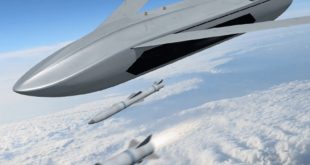Introduction The landscape of modern warfare is on the brink of transformation as the US Air Force unveils its bold vision to introduce a fleet of 1,000 AI-controlled attack drones. These Collaborative Combat Aircraft (CCA) drones are poised to revolutionize the way military operations are conducted, offering capabilities that span …
Read More »Revolutionizing Lunar Exploration: The Role of Robots and Swarms in Establishing Moon Bases and Exploiting its Rich Mineral Resources
The moon, Earth’s celestial companion, has always fascinated humanity. In our quest to explore its mysteries and harness its resources, robotics and advanced technologies have emerged as the catalysts for revolutionizing lunar exploration. With the goal of establishing moon bases and tapping into its mineral wealth, we delve into the …
Read More »Unlocking the Future: Exploring the Potential of Quantum-Inspired Robotics and Autonomous Systems
Introduction As technology continues to advance at an unprecedented pace, our understanding of the quantum world has opened up new possibilities in various fields. One such exciting realm is the intersection of quantum physics and robotics, giving rise to quantum-inspired robotics and autonomous systems. These cutting-edge technologies have the potential …
Read More »Biomimetic Robotic Fish Inspire Navies to Unlock the Depths with Agile and Maneuverable Unmanned Underwater Vehicles
The vast expanse of the underwater world holds many mysteries and challenges for naval forces. As technology advances, navies are increasingly turning to unmanned underwater vehicles (UUVs) to explore and conquer the depths. Unmanned underwater vehicles (UUVs) are becoming increasingly important for a variety of military applications, including mine detection, …
Read More »Revolutionizing Driverless Cars: Exploring Multisensor Fusion Algorithms for Optimal Hardware and Software Design
The emergence of driverless cars has brought about a paradigm shift in the automotive industry. These vehicles have the potential to revolutionize transportation, making it safer, more efficient, and more accessible to everyone. promising a future of safer roads, increased efficiency, and enhanced mobility. For a deeper understanding of driverless …
Read More »Full Speed Ahead: How Fully Autonomous Technologies Are Driving the Global Driverless Car Revolution
In recent years, the automotive industry has been experiencing a revolutionary shift towards driverless cars. Powered by cutting-edge technologies, these vehicles are reshaping transportation as we know it. Among these technologies, fully autonomous systems have emerged as the driving force behind the global driverless car revolution. In this article, we …
Read More »Autonomous shipping or Maritime Autonomous Surface Ships (MASS) is the future of the maritime industry
The maritime industry has been essential for global trade and commerce for centuries. With advancements in technology, the industry is now evolving towards autonomous shipping or Maritime Autonomous Surface Ships (MASS). Autonomous ships refer to the ships that are remote built ships where operations are performed by remote control mechanism. …
Read More »How Mobile, Fully Autonomous Security Robots Enhance Public Safety in Malls, Parking Lots, and Neighborhood Parks
As technology continues to advance, security measures have also evolved to keep pace. One of the latest innovations in the field of security is mobile, fully autonomous security robots that are now being deployed in malls, parking lots, and neighborhood parks to enhance public safety. Autonomous security robots are an …
Read More »How DARPA’s LongShot Program is Revolutionizing Air Combat with Air-Launched Air-to-Air Missile Carrying Drones
In the realm of modern aerial warfare, technological advancements are continually pushing the boundaries of what is possible. One such groundbreaking initiative is the Defense Advanced Research Projects Agency’s (DARPA) LongShot program, which is paving the way for a new era in air combat with its innovative approach to air-to-air …
Read More »Wireless Power Unleashed: DARPA’s Whisper Beam for UAV Swarm Operations
Introduction In recent years, Unmanned Aerial Vehicles (UAVs), commonly known as drones, have rapidly evolved from niche technology to indispensable tools for various industries and military applications. However, one of the most significant challenges for UAVs has always been their limited flight time due to onboard battery constraints. To overcome …
Read More » International Defense Security & Technology Your trusted Source for News, Research and Analysis
International Defense Security & Technology Your trusted Source for News, Research and Analysis

